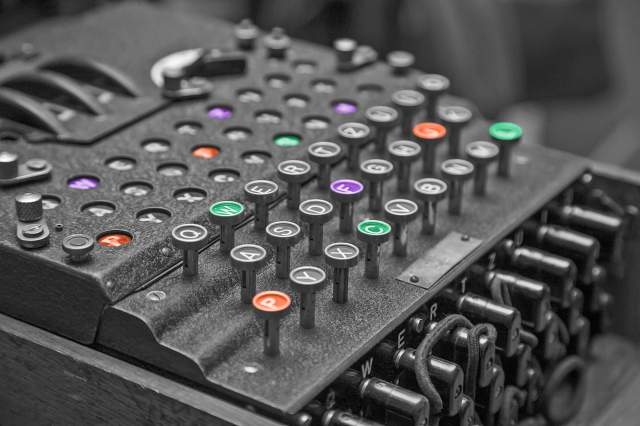
The Caesar Cipher
The use of coded messages for military means goes back into the shadows of antiquity. In fact, Roman general Julius Caesar was the mind behind an early documented use of simple substitution ciphers. The one that would eventually bear his name called for shifting alphabet letters three places ahead; in English, that means an A becomes a D, B becomes E, etc. It may seem like child’s play compared to the more complicated codes that later emerged, but the Caesar Cipher was easy for allies to remember, confounded the largely illiterate hordes who resisted intrusion, and allowed Caesar to significantly expand the Roman Empire en route to consolidating his power as dictator.

The Great Cipher
Developed by a father-son team that encrypted messages for the French monarchy in the 17th century, the Great Cipher repelled all attempts at penetration until military cryptanalyst Étienne Bazeries unlocked its secrets some 200 years later. As described in Simon Singh’s The Code Book, Bazeries broke through when he realized the cipher’s 587 unique numbers generally represented syllables, though he remained hindered by the built-in traps; some numbers did stand for individual letters, while others served to delete the previous number. Bazeries’ success enabled historians to read letters dated from the reign of Louis XIV, with one seeming to point to the identity of the infamous Man in the Iron Mask as a disgraced military commander named Vivien de Bulonde.

The Voynich Manuscript
In 1912, a rare books dealer named Wilfrid Voynich enjoyed a dream discovery in the form of a 240-page vellum manuscript filled with letters, numbers, and symbols alongside vivid drawings of plants, nude women, and fantastical creatures. Now housed in Yale University’s Beinecke Library, the 15th-century codex has been carefully categorized into six sections — botanical, astronomical and astrological, biological, cosmological, pharmaceutical, and recipes — but otherwise remains indecipherable to those who’ve attempted to extract meaning from its passages. Researchers in recent years have suggested that the text is Semitic, and an Egyptologist claimed to have followed that scent to a breakthrough in 2020, though skeptics contend that the manuscript is just one big, elaborate hoax.
More Interesting Reads

The Enigma Machine
After the conclusion of World War I, the German military began laying the groundwork for future conflicts with the development of a typewriter-like contraption that generated an ever-changing system of encrypted messages. Said to have been named for Elgar’s Variations, the Enigma Machine enabled users to type in letters that wound through a series of interior rotors before spitting out different letters; the recipient of a coded missive would adjust his machine’s rotors to the same position, enabling him to read the original message. Of course, one good encryption machine deserves another, and British mathematician Alan Turning managed to automate his code-breaking techniques into what became known as the Bombe, helping the Allied forces decipher crucial messages during World War II.

The Copiale Cipher
Like the Voynich Manuscript, the Copiale Cipher is a centuries-old book filled with unusual writing, symbols, and diagrams, but this one at least has proven to be a repository of legitimate, albeit still mysterious, information. Going on the assumption that its language was German-based, a University of Southern California machine-translation expert dove into the 75,000-character text and determined that its Roman characters stood for spaces and that symbols with similar shapes represented the same letter. With help from two European academics, who helped refine crucial areas of translation, the 105-page book was revealed in 2011 to be the work of an 18th-century secret society, opening a window into one of the underground orders that populated the Western world during the Age of Enlightenment.

The 340 Cipher
The Zodiac Killer earned a place in pop culture lore for murdering at least five people in the San Francisco Bay area in the late 1960s, and for the encoded messages he sent out to thumb his nose at authorities. While he was never (knowingly) captured, a team of three amateur sleuths at least solved one aspect of the mystery in late 2020 by cracking a 340-character cipher of letters and symbols mailed to the San Francisco Chronicle 51 years earlier. Using a computer program to run through 650,000 possible combinations, the team eventually found legible words by splitting the message into three parts and reading the letters diagonally, the results corresponding to other messages from the author. Two other ciphers attributed to the Zodiac Killer remain unsolved, and while some claim to have unveiled the words within, these messages are considered too short to produce verifiable answers.












